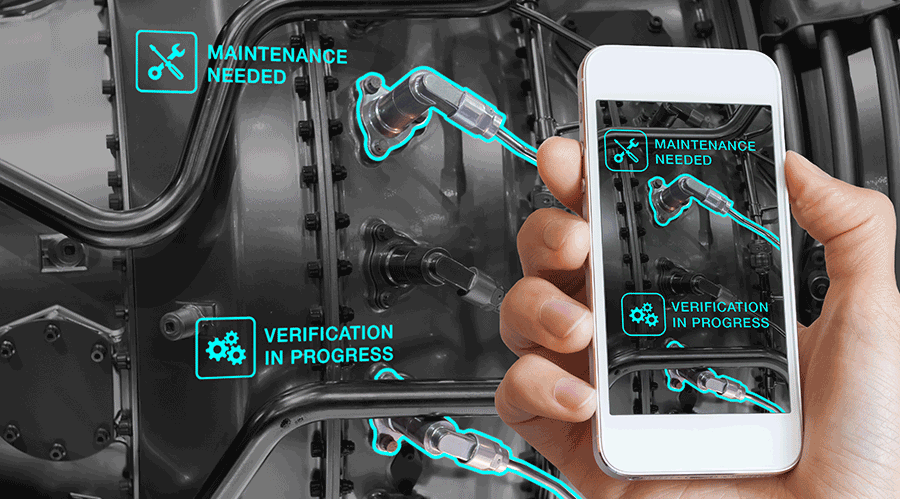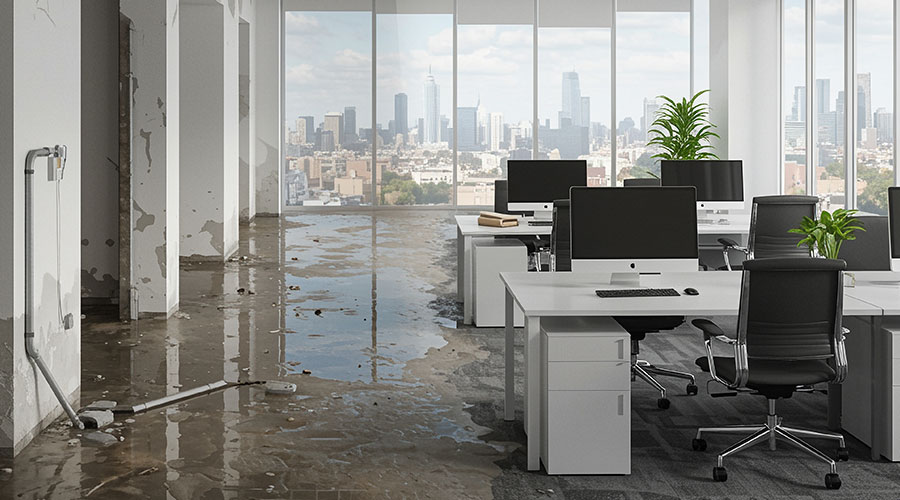Material Matters
Using organization and technology to ensure technicians have easy and reliable access to essential parts and equipment
Managers spend a great deal of time finding the right equipment and spare parts to support front-line technicians’ daily maintenance activities. They also spend time looking for the best price for these materials and ensuring they are delivered on time.
But all of these efforts go to waste if managers don’t take time to streamline the in-house systems for distributing these materials. Often, this means using organization and technology to control and reduce inventory. The best way to reduce inventory is to centralize it in one location. Maintenance inventory reduction is as much an organizational challenge as it is a system problem.
Many maintenance and engineering departments practice good inventory control through the use of good systems and procedures for calculating proper inventory levels. But too many of these departments have several cribs and storage areas separate from central stores, where inventory is kept unattended and accounted for, and they incur a cost penalty of 10-20 percent or more due to redundancy.
Technicians will over-withdraw from attended stores and place the items in unattended storage areas for their personal convenience. As a result, the storeroom attendant sees that quantities are below minimum and reorders them, even though units are lying unused in several cribs outside of the attended area.
In some facilities where stores procedures have been audited, supervisors have estimated that unattended storage areas with no inventory procedures to control them contained material values in the millions of dollars — representing as much as one-half of total material value.
Getting these material stocks under control of central stores is the most effective way to reduce material costs. Organizations pay the penalty for the convenience of having large dollar values of material in unattended stores also in another way: Technicians and supervisors spend large amounts of time hunting for and replenishing these supplies. Instead, this process should be the responsibility of central stores personnel, freeing crew and supervisors to do actual repair and project work.
Certainly, technicians can store some small amounts of low-cost items, such as fasteners and small spare parts, in such areas. But the tendency is for the quantity and value of the items to increase over time. And very little counter-pressure exists to reduce these stores by returning items periodically to central stores — unless management initiates such efforts at least annually.
Central Control
The best way to improve overall material availability is to centralize it in one location. It is not a coincidence that this is also the best way to reduce material costs.
The first step to improving material availability is getting control of all material. This includes not only central stores items but also items in unattended storage areas and cribs. It includes spares that are taken out of service, rebuilt and put back in various workshop shelves or in cabinets.
Sometimes, central stores space is limited. In these cases, some unattended stores areas inevitably will be located in various satellite locations. And if the facility is very large or spread out, reason dictates that some area workshops are required in or near key areas they support. But even if managers can keep these exceptions to a minimum — and they must be exceptions that are kept to a minimum — the department loses some control, and redundancy of stored items creeps in.
When these conditions occur, managers can make a tradeoff. Because letting these area stores flourish totally unattended is very costly and putting an attendant in every store is also not economical, managers can compromise with an organizational improvement: adding a material coordinator.
Typically, one material coordinator can support about 150 trades workers and up to seven maintenance planners. The material coordinator’s contact with central stores is limited to knowing or having a catalog of the items in stock. The attendant spends more than 90 percent of the time in the unattended stores area, in area workshop cribs and talking to planners to determine the material needs for jobs they are planning.
The material coordinator has two main responsibilities: maintaining location control of all unattended materials, tools and equipment and spares; and assisting the planners in staging items to the job sites for repair and project work in progress. The material coordinator spends most time doing material planning for large jobs because they tend to be the most complicated.
Moving to Bar Coding
The bar coding of stores items is fast replacing the more traditional labeling of item numbers and location identification. Imple-menting a bar-coding system involves a series of important steps.
Document the existing system. List the current problems, such as storeroom window delays, lost items, tracking problems, stock-outs when the system showed a quantity on hand, inventory accuracy, and data-entry errors. Keeping in mind established objectives and benefits, also list potential the solutions to the problems, including better control, accountability, reduced cost, reduced shortages and overages and better order points.
Organize computer databases. Review the accuracy of personnel, tool and material databases. The bar-coding system will not correct inaccuracies that already exist. Prepare or upgrade each database using a logical coding method and consistent descriptions. These two features are the most important step in preparing for the bar-coding implementation. An effective item-type scheme is especially important.
The employee database should be set up to document employees by name, ID number, job number and department. This information can be sorted to show who has checked out parts, how many, how often and for which jobs.
Facilitate window transactions. The recordkeeping at the stores window will be faster if each employee has an ID card. Existing cards can be used with a bar-code identification number added, or a list of employee names with bar codes can be stationed near the window. To speed up transactions, the stores attendant scans the employee bar code during the transaction instead of writing the name or number.
Improve the physical environment. Changes such as adding high-density storage cabinets are always beneficial. Move high-use items near the window, and make sure each bin offers easy access to the place where the bar code is located to facilitate scanning. Finally, The computer terminal should be located on a shelf or counter near the storeroom window for easy access during transactions or data transfer.
Bring the system online. A gradual testing and training process saves time and money by uncovering glitches early and allowing for adjustments. This approach also gives managers and employees a chance to see how the system works and time to adjust to the changes.
Typically, issuing materials using a bar-code system involves these steps: The employee presents an ID badge to the storeroom attendant. The attendant scans the badge, locates the material bin, scans the part ID on the bin, enters the quantity on the scanner keypad, enters a transaction code on the keypad; and issues the ID badge and part to the employee. Later, when there is no traffic at the window and time permits, the attendant transfers the accumulated transactions by docking the scanner and uploading all transactions stored in the scanner. No keyboard typing is required.
Inventory Planning Pays
In many maintenance organizations, materials represent one-half of the operational budget. Inventory values are often in the millions of dollars. Management relies on the availability of such items as spare parts for machinery and equipment.
In these organizations key employees can spend 30-50 percent of their time on materials-requisition paperwork or physically hunting for materials. If a supervisor-to-employee ratio is 1:15 and the supervisor spends half the time obtaining materials, the true ratio is 1:30, cutting direct supervisory time in half. This situation causes substantial material delays and is ineffective labor use because others must wait for their next assignments while supervisors are chasing materials.
The primary purpose of stores control is to obtain quality materials and spares on time and at a reasonable cost. With good recordkeeping methods and good location control, managers can lower total material costs by as much as 15 percent and improve material availability at the same time.
|
Related Topics:











